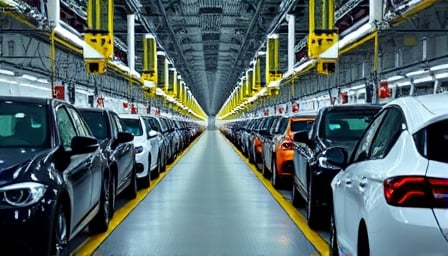Volvo AB Navigates Turbulent Market Landscape
As the global industrial machinery landscape continues to evolve, Volvo AB is facing unprecedented challenges stemming from tariffs and a rapidly shifting market environment. The Swedish conglomerate has taken decisive action to mitigate the impact of US tariffs, which have significantly disrupted its production operations. In a strategic move to adapt, Volvo is redirecting its production to the US, a bold step that underscores the company’s commitment to resilience and agility.
Electric Vehicle Push: A Beacon of Hope
Amidst the uncertainty, Volvo’s focus on electric vehicles has emerged as a beacon of hope. Recent sales figures have revealed a substantial increase in demand for electric trucks, a trend that underscores the growing appeal of eco-friendly transportation solutions. This development is a testament to Volvo’s forward-thinking approach, which has enabled the company to stay ahead of the curve in a rapidly evolving market.
Cost-Cutting Measures: A Necessary Evil
In a bid to navigate the treacherous waters of a tariff-ridden market, Volvo has unveiled a comprehensive cost-cutting program aimed at reducing expenses and streamlining operations. This move is a necessary evil, one that will enable the company to adapt quickly and effectively in a rapidly changing environment. By taking proactive steps to mitigate the impact of tariffs, Volvo is demonstrating its ability to navigate the complexities of a global market in flux.
Uncertainty Remains
Despite these efforts, Volvo’s financial situation remains precarious, with the company seeking to reduce costs and adapt quickly in response to shifting market conditions. As the global industrial machinery landscape continues to evolve, Volvo’s ability to navigate this complex terrain will be put to the test. One thing is certain, however: the company’s commitment to innovation, resilience, and adaptability will be crucial in determining its future prospects.
Key Takeaways
- Volvo AB is redirecting its production to the US in response to tariffs and a shifting market environment.
- The company’s focus on electric vehicles has emerged as a key growth driver.
- Volvo’s cost-cutting program is aimed at reducing expenses and streamlining operations.
- The company’s financial situation remains uncertain, with a need for continued adaptability and innovation.
